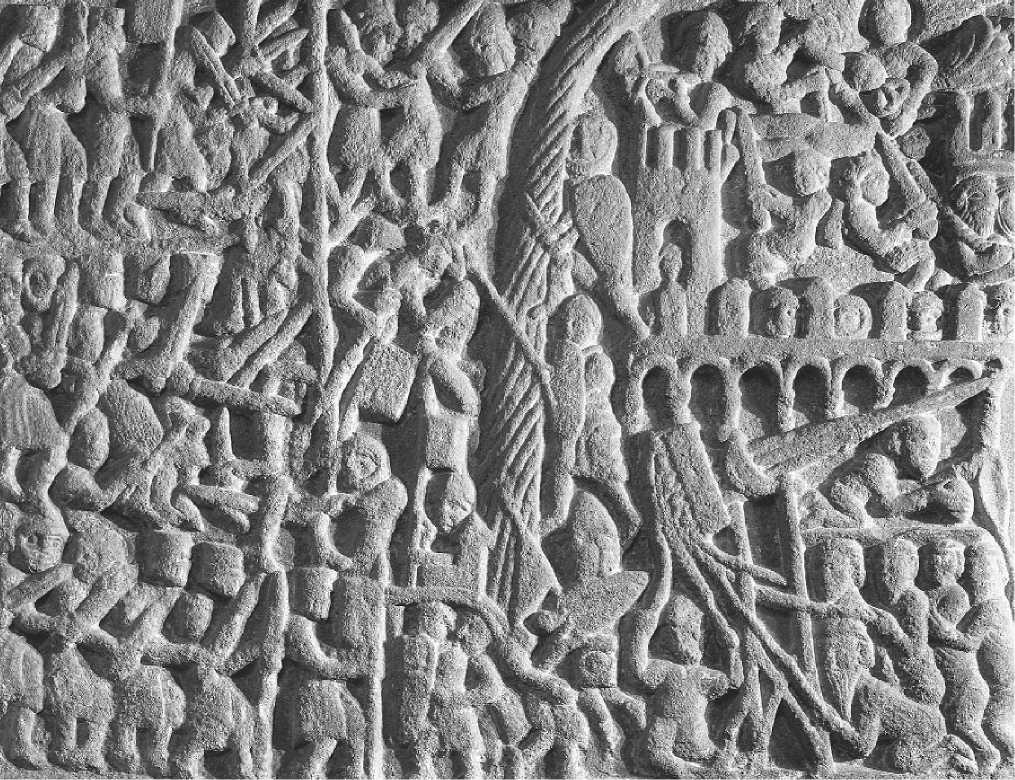Participant in the Fourth Crusade (1202-1204), first leader of the Albigensian Crusade (1209-1229), and subsequently count of Toulouse (1216-1218).
Simon was born around 1160, a younger son of Simon of Montfort-l’Amaury, lord of Rochefort in the Ile-de-France, and Amice of Leicester. By 1200 he had established a solid reputation as a brave and gifted soldier of pious and virtuous disposition. When, therefore, together with his brother Guy of La Ferte-Alais (a veteran of the Third Crusade), he joined the Fourth Crusade in 1202, he could expect to play a leading role, but he was to be disappointed.
Committed to the ideal of the crusade as war against the infidel, Simon and his friend Abbot Guy of Vaux-de-Cernay opposed the diversion of the army against the Christian city of Zara (mod. Zadar, Croatia). Knowing that Abbot Guy had received a letter from Pope Innocent III forbidding an attack, and that the power of excommunication could be used to enforce this directive, he informed the defenders, and so provoked the resistance that led to the crusader attack on the city. Simon, Guy, and Engeran of Boves led the opposition to the treaty with the Greek prince Alexios Angelos; after it was concluded, they left the main crusade for Palestine, where Simon fought with distinction. On his return, he went to England, where he had been recognized as earl of Leicester in succession to his maternal uncle by 1206.
In 1209 Simon accepted an invitation from the duke of Burgundy to lead an army in the papal crusade against the

Detail of the sarcophagus of Simon of Montfort, thirteenth century, St. Nazaire, Carcassonne, France. (Erich Lessing/Art Resource)
Albigensians of the Languedoc. For a zealot such as Simon, the threat posed by the heretic, the enemy within, was even greater than that posed by the infidel. Simon’s military prowess and undoubted bravery won admiration, but the callous brutality of the campaign shocked even contemporaries. In July 1209 he took Beziers, and Carcassonne soon afterward surrendered. Elected leader, and bearing the title of viscount in each place, he thereafter governed wisely. In 1210 he took Albi, and besieged Toulouse in 1211, finally defeating Count Raymond VI of Toulouse at Castelnaudry. At the battle of Muret (12 September 1213), he defeated a coalition led by King Peter II of Aragon, who was killed. However, resistance continued, and in 1215 Prince Louis (VIII) came to his aid. In April 1216 Simon did homage to King Philip II of France for all the lands formerly held by Raymond VI.
Simon was killed on 25 June 1218 during the siege of Toulouse, which had readmitted Count Raymond in September 1217. By his wife Alice of Montmorency, whom he had married around 1190, he left four sons and two daughters, including Simon, earl of Leicester.
-K. S. B. Keats-Rohan
See also: Jerusalem, (Latin) Kingdom of
Bibliography
Canet, Victor, Simon de Montfort et la croisade contre les Albigeois (Lille: Societe de Saint-Augustin, 1891).
Dossat, Yves, “Simon de Montfort,” in Paix de Dieu et guerre sainte en Languedoc en Xllle siecle, ed. Marie-Humbert Vicaire (Toulouse: Privat, 1969), pp. 281-302.
Hamilton, Bernard, The Albigensian Crusade (London: Historical Association, 1974).
Keck, Christine, “L’entourage de Simon de Montfort pendant la Croisade albigeoise et l’etablissement territorial des crucesignati,” in La Croisade albigeoise, ed. Michel Roquebert (Carcassonne: Centre d’Etudes Cathares, 2004), pp. 235-243.
Oldenburg, Zoe, Massacre at Montsegur: A History of the Albigensian Crusade (London: Minerva, 1968).
Roscher, Helmut, Papst Innocenz III. und die Kreuzugge (Gottingen: Vandenhoeck & Ruprecht, 1969).
Sumption, Jonathan, The Albigensian Crusade (London:
Faber, 1978)




 World History
World History









